8 Fascinating Octopus Facts Every Diver Should Know
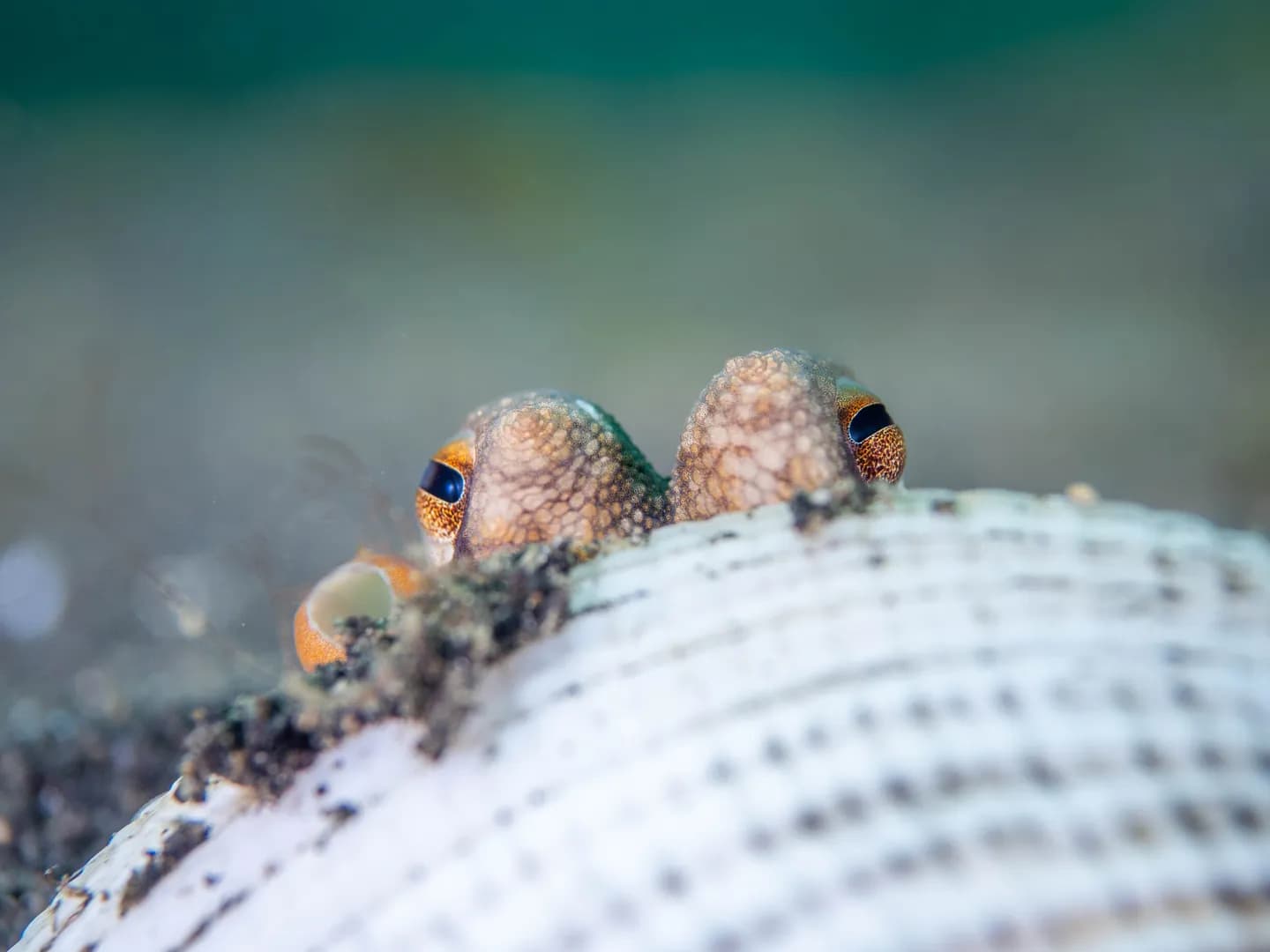
Few creatures inspire as much curiosity among divers as the octopus. Elusive, highly intelligent, and with an otherworldly beauty, these masters of camouflage are among the ocean’s most remarkable residents.
In Lembeh, encounters with octopus are undeniable highlights of any dive, providing a window into an entirely different kind of consciousness. In this article, we show some love for our favorite cephalopods, with some fascinating facts about octopus biology, behavior, and intelligence.
1. Alien Intelligence Beneath the Waves
Octopuses* are cephalopods, and their lineage split from ours more than 500 million years ago. That means their intelligence evolved completely independently from vertebrates. For divers, observing their problem-solving abilities and curiosity is like coming face-to-face with an alien form of consciousness.
*Note: The Plural of ‘Octopus’
You’ll sometimes hear people say ‘octopi’, but that’s actually a misnomer. The word octopus comes from Greek, not Latin, so the proper English plural is octopuses. (If you really want to get fancy, the original Greek plural is octopodes, but you’ll almost never hear that outside of a pub quiz.)
2. Brains in Their Arms
An octopus has around 500 million neurons, more than half of which are in its eight arms. Each limb can sense, grasp, and even ‘think’ independently — tasting with suction cups, feeling textures, and exploring crevices, all without central control. When diving in Lembeh, you will sometimes notice arms probing around rocks while the animal’s body watches from a safe vantage point. Next time you spot an octopus, look out for examples of this distributed intelligence in action.
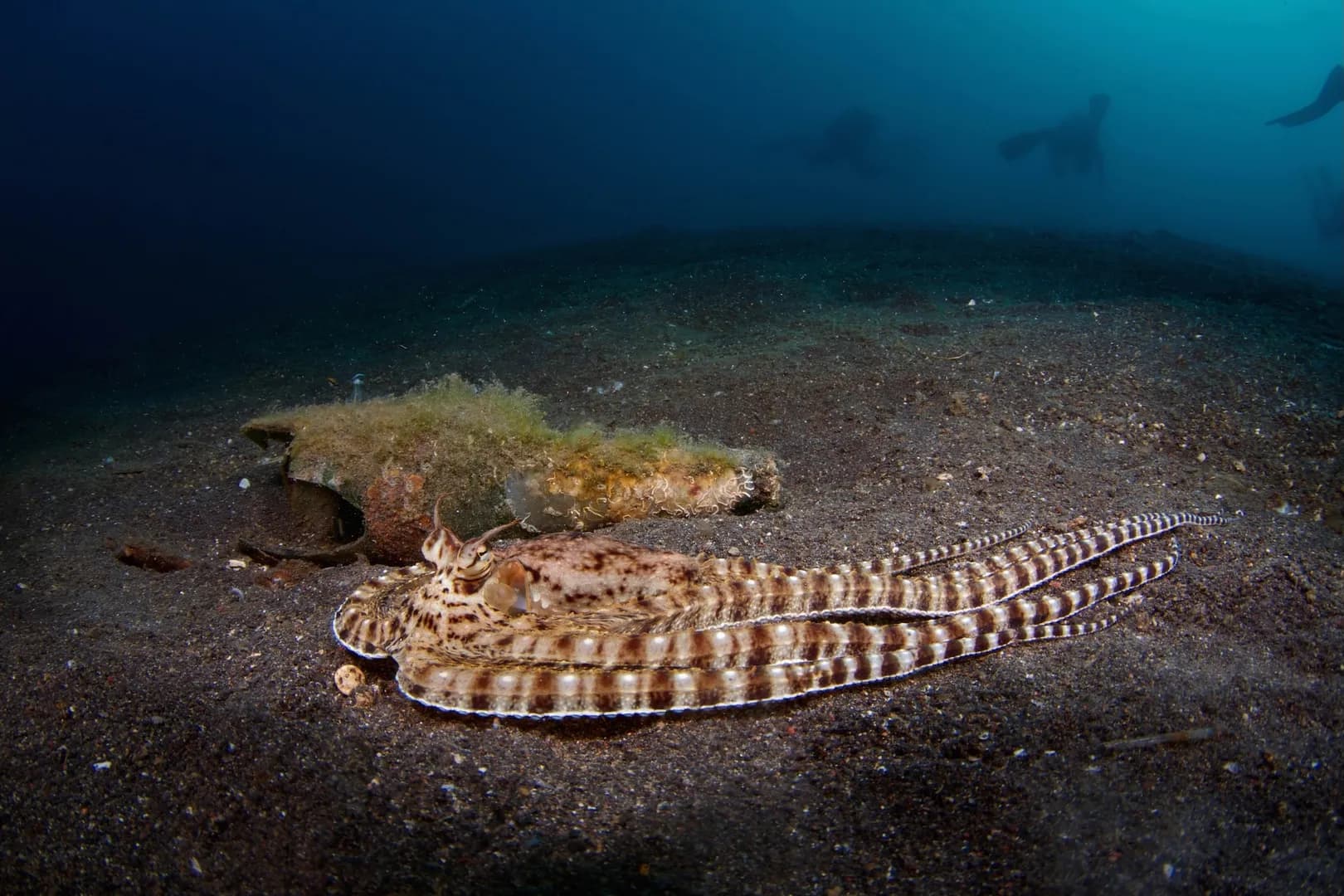
3. Masters of Disguise
With a combination of pigment sacs (chromatophores), reflective cells (iridophores), and skin-texture muscles (papillae), octopuses can instantly change their color, pattern, and even skin texture. One moment they’re blending into sandy rubble, and the next they’re imitating a lionfish or sea snake. For underwater photographers in Lembeh, this lightning-fast camouflage makes every sighting unpredictable — and a dream to capture.
4. Tool Users of the Sea
Octopuses don’t just adapt to their environment — they adapt their environment to themselves. In captivity, octopuses can open jars, navigate mazes, and even manipulate objects in ways that qualify as tool use. This places their intelligence on par with chimpanzees and crows; however, unlike birds and primates, octopuses lack cultural transmission (they don’t teach each other skills), so every individual has to figure things out on its own.
In the wild, blanket octopuses have been seen carrying the venomous tentacles of Portuguese man-of-war as weapons. When diving in Lembeh, you will sometimes see coconut octopus (Amphioctopus marginatus) carrying shells with them like a mobile home, or arranging them around its den — what you’re witnessing is a high form of intelligence from one of the ocean’s true tool users.
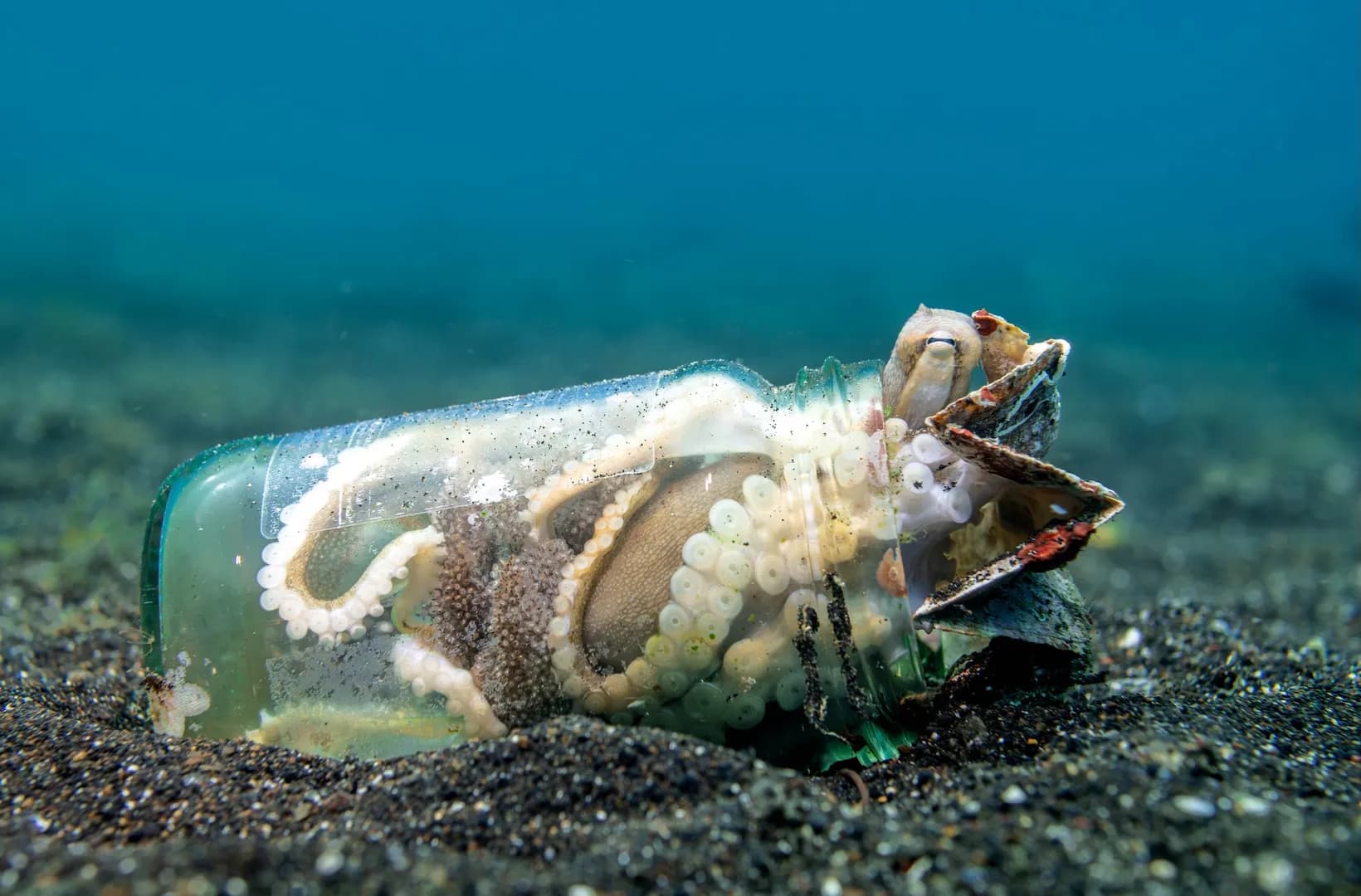
5. Talented Escape Artists
For all their curiosity and intelligence, octopuses are also prey for moray eels, reef sharks, groupers, flounders, and even dolphins. But when it comes to survival, these resourceful cephalopods have a playbook of escape tricks up their sleeve. Here’s some of their most mind-bending survival strategies:
- Inky illusions: When threatened, an octopus ejects a cloud of ink laced with mucus. Sometimes it forms into a blob called a pseudomorph — a decoy ‘octopus’ that distracts predators. The ink also contains chemicals that dull a predator’s sense of smell and taste, effectively jamming their sensory radar.
- Jet propulsion: By blasting water through their siphon, octopuses can shoot backwards at high speed, often disappearing in a flash after inking. Some species can even launch themselves clear out of the water to break pursuit.
- Camouflage and mimicry: Octopuses are shape-shifting experts. Their chromatophores, iridophores, and papillae allow them to vanish into sand and rubble or impersonate venomous species like lionfish, flatfish, or sea snakes. Lembeh’s mimic octopus (Thaumoctopus mimicus) is the textbook example — and a favorite among macro photographers.
- Shell forts: The coconut octopus carries coconut shells or clam halves across the seabed, snapping them shut around itself like a mobile bunker when danger threatens.
- Arm sacrifice: If the above tactics fail, octopuses have a few more drastic measures to fall back on. Some species will intentionally shed a limb if captured; the severed arm continues wriggling and suctioning, distracting the predator long enough for the octopus to slip away. Over time, the arm grows back.
- Playing dead: In a last-ditch tactic, an octopus may go limp and drift like discarded debris, tricking predators into ignoring what appears to be an inedible carcass.
Together, these strategies make octopuses the ultimate escape artists. For divers, watching one deploy its evasive maneuvers is as thrilling as any big-pelagic encounter — proof that survival in the sea is equal parts strategy, speed, and sleight of hand (or tentacle).
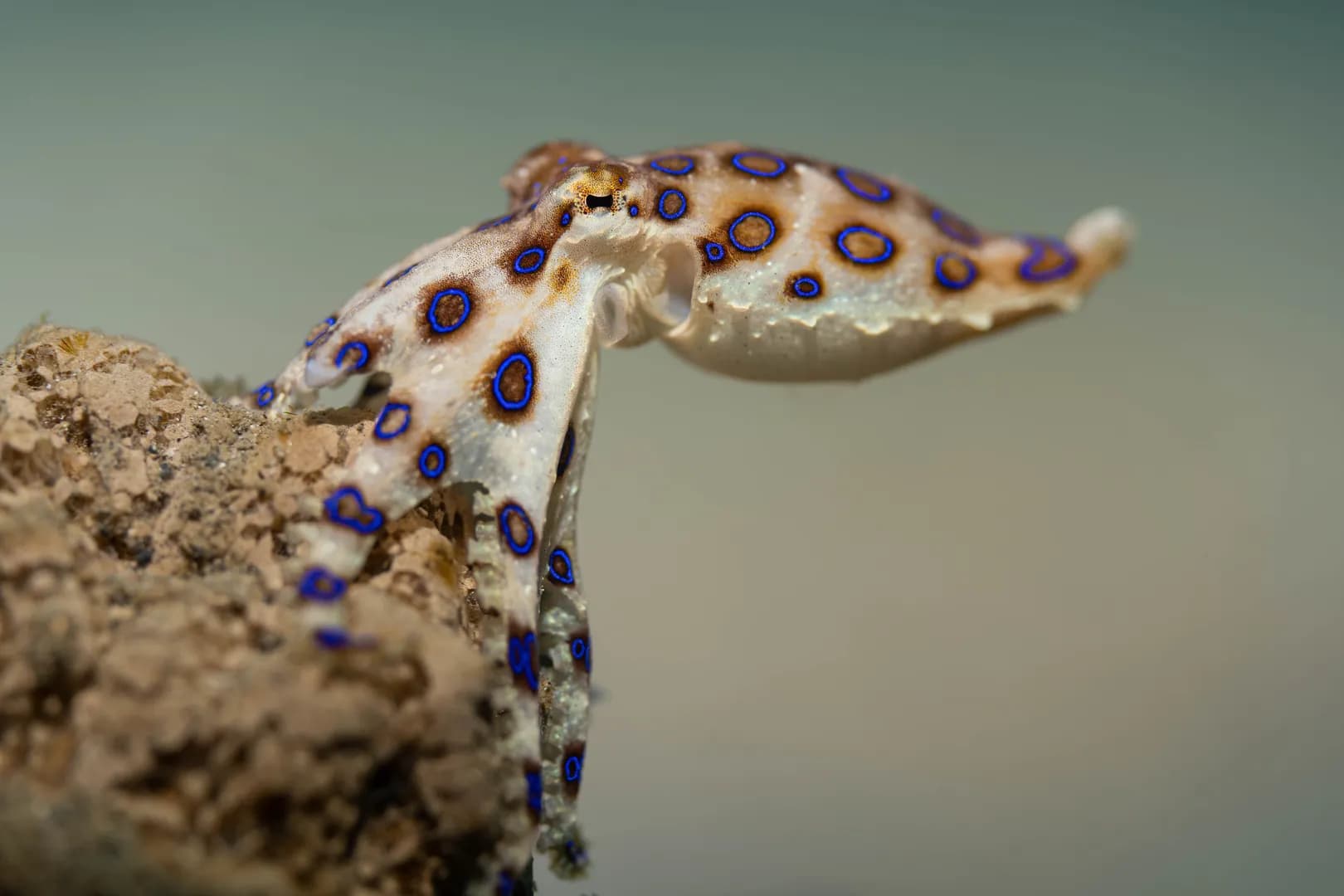
6. They Recognize People (and Show Favoritism)
This is where it gets really amazing. Recent research on octopuses in captivity has revealed they can recognize individual humans and remember them. Some keepers have reported octopuses greeting friendly staff with gentle touches, while squirting jets of water at those they dislike. While divers won’t usually earn this level of personal recognition in a single encounter, if you spend enough time diving in the Lembeh Strait, you may notice the same individual octopus responding differently to different divers.
7. Short, Brilliant Lives
Most octopuses live just one to two years. They hatch, grow rapidly, hunt with astonishing ingenuity, and after breeding, the females guard their eggs without eating until they die. Their entire lifespan is a compressed burst of creativity and survival — a reminder of how fleeting yet spectacular their time in the ocean is.
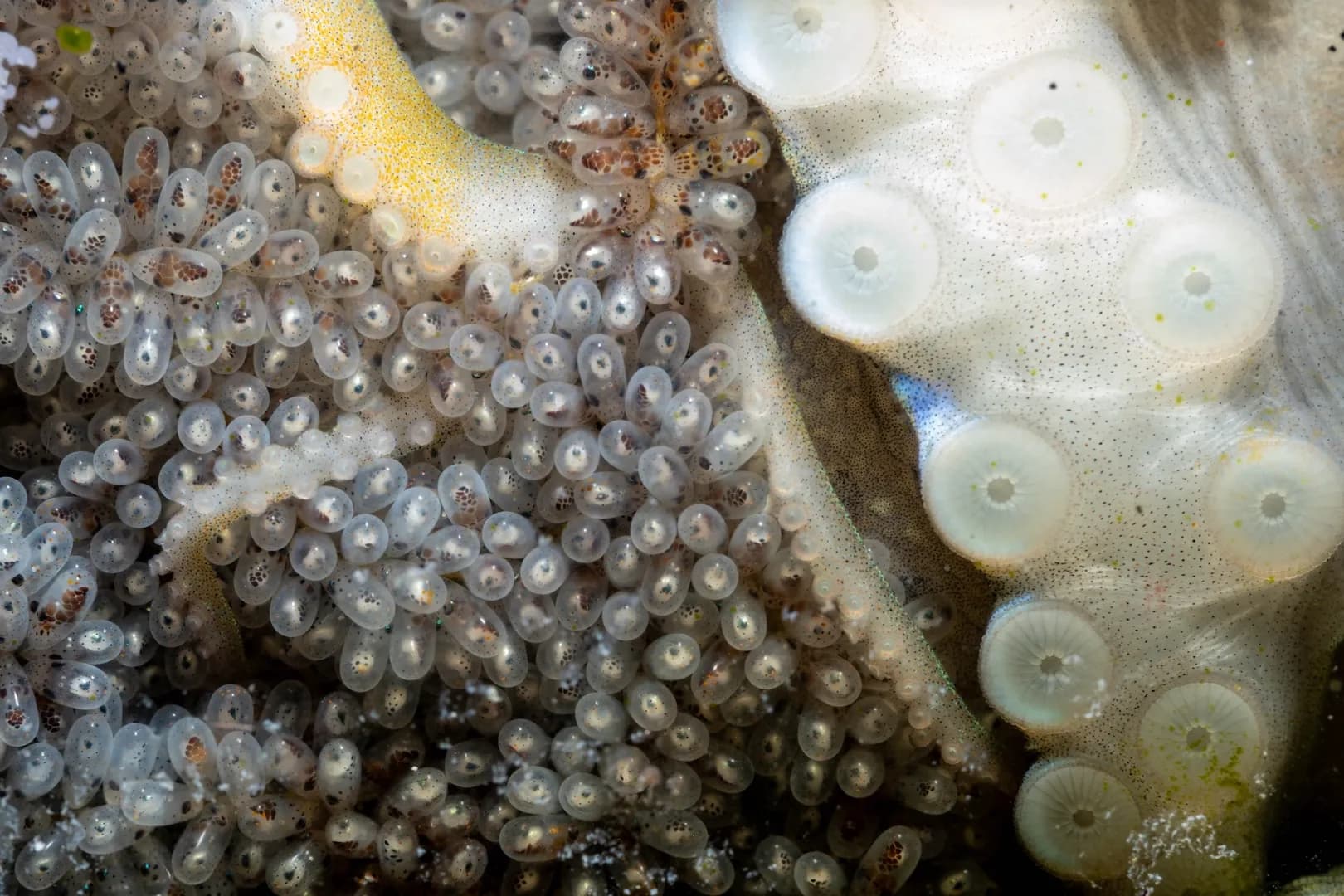
8. Cephalopod Curiosities
- Blue blood: Their copper-based hemocyanin makes their blood blue, perfectly adapted to oxygen transport in cold, low-oxygen waters.
- Ink clouds: Beyond a simple smokescreen, octopus ink contains chemicals that can dull a predator’s sense of smell and taste, giving the cephalopod a crucial few seconds to escape.
- Suction power: Each arm has up to 2,000 suction cups, which are capable of independent movement and taste. A giant Pacific octopus can lift around 14 kilograms (30 lbs) with a single arm.
- Playful behavior: Octopuses have been observed juggling shells, bouncing bottles in water jets, and interacting with divers’ gear — behaviors that look a lot like play.
- Boneless bodies: With no skeleton, an octopus can squeeze into holes no bigger than its beak. In Lembeh, this is how mimic and wunderpus vanish into impossibly small burrows.
- Learning and memory: Octopuses show short- and long-term memory. In lab tests, they learn visual cues, remember solutions, and even retain them after delays. Their learning style is similar to vertebrates, despite having a radically different brain structure.
Diving With Octopuses at Lembeh Resort
The Lembeh Strait is home to more than a dozen types of octopus – our guides have confirmed sightings of no fewer than 15 distinct species – You can read more about a few of them in this blog. Each one is more than just a marine curiosity — they’re shape-shifting escape artists, tool-using problem-solvers, and living proof that intelligence takes many forms.
For divers in Lembeh, every encounter is a reminder that the ocean is full of surprises, and home to minds that are profoundly different from our own. Next time you’re muck diving in the Lembeh Strait with us, keep your eyes open — you might just share a moment of recognition with one of the region’s most fascinating residents.
Ready to book your diving adventure with Lembeh Resort? Get in touch today and begin planning your perfect trip with us.



